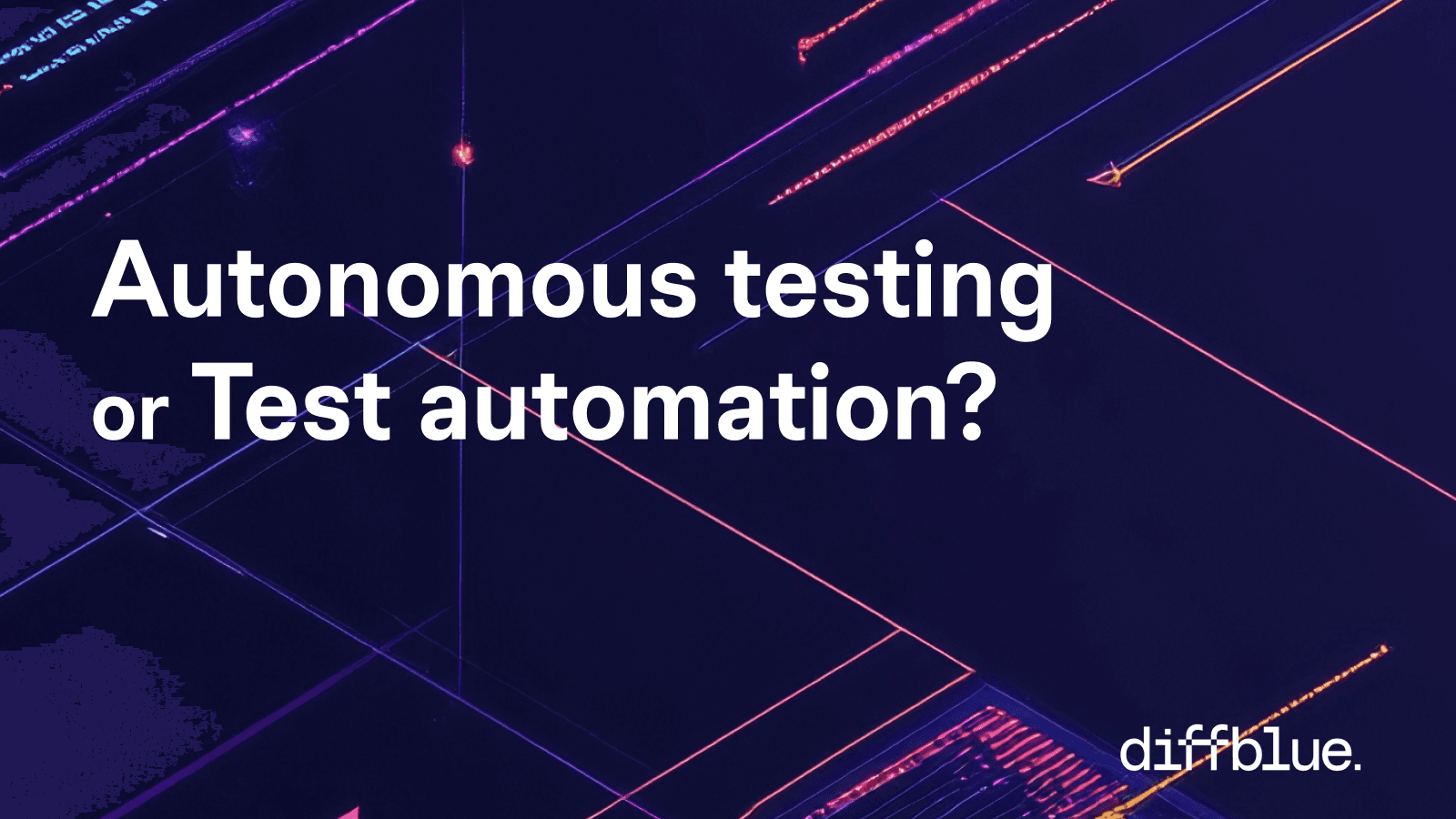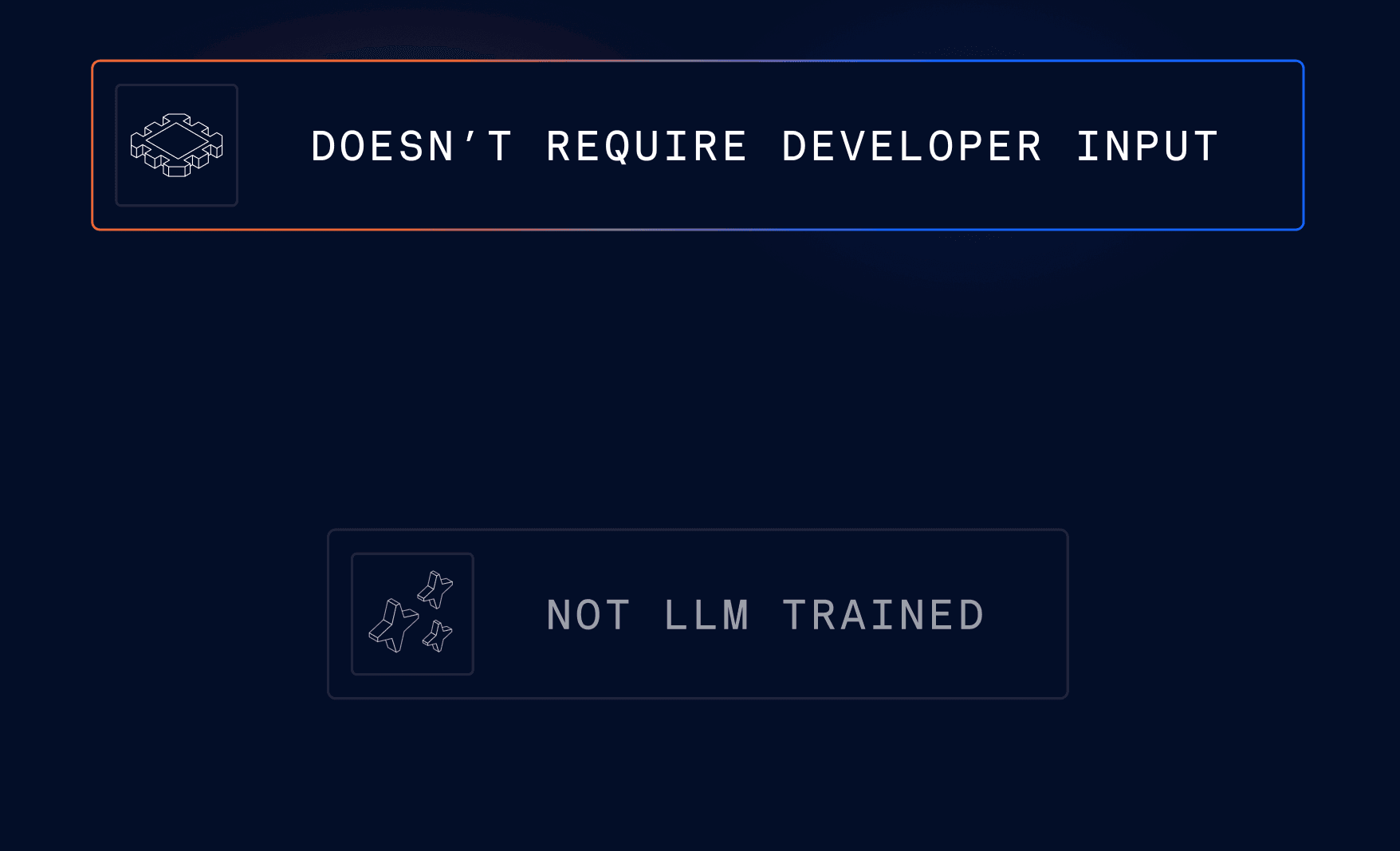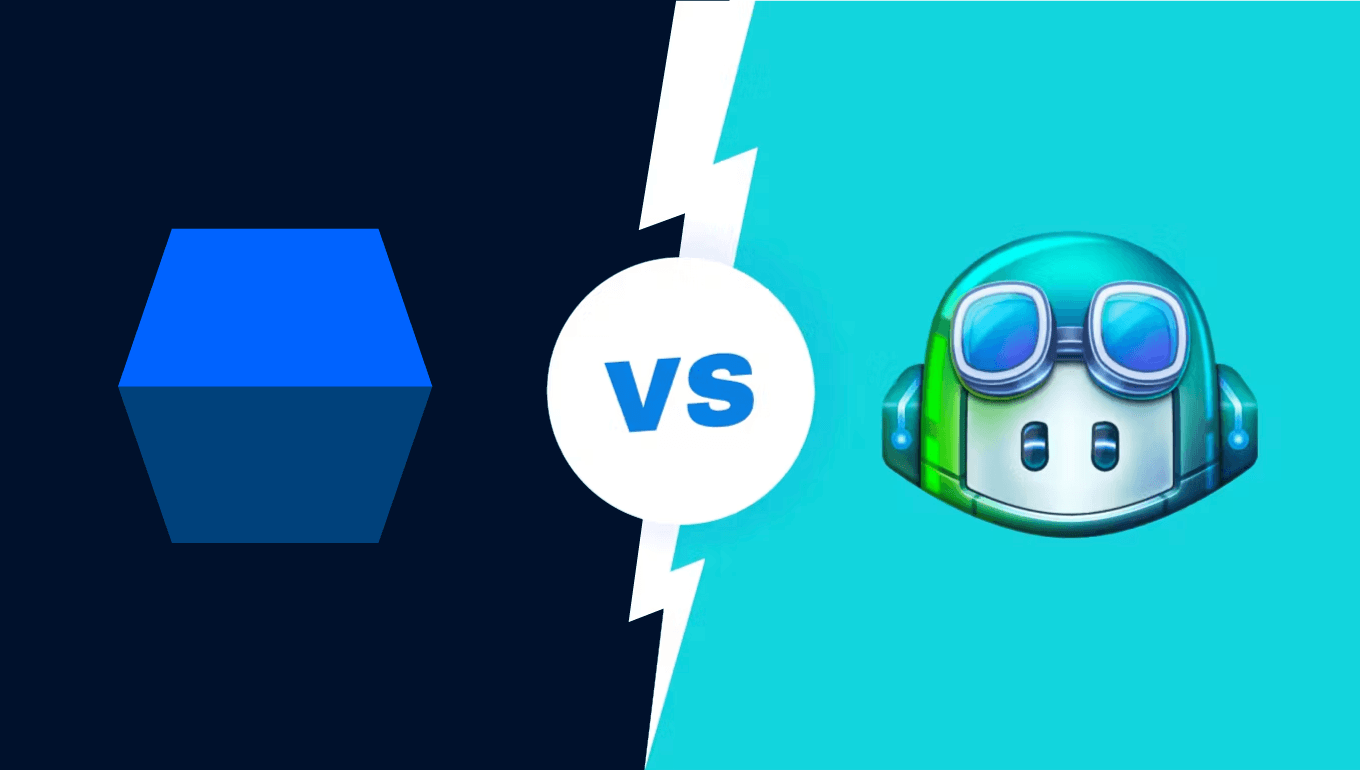It’s easy to mix up autonomous testing and test automation—after all, the phrases sound almost identical.
Here’s the simple distinction: When an AI agent both writes and runs the tests, you have autonomous testing. When people write the tests and then hand them to a machine for execution, you have test automation.
Make no mistake: We’re at the advent of the era of AI agents and increasingly autonomous development and testing. Agentic AI-driven solutions like Diffblue Cover, which supports both autonomous testing and test automation, are at the forefront, demonstrating what AI can do for Java unit testing.
In this article, we’ll explore the differences between autonomous testing and test automation. We’ll also review how Diffblue Cover gives your teams the best of both these worlds.
Autonomous testing brings intelligence and adaptability, handling unpredictable scenarios by learning from interactions. Test automation offers speed and consistency for well-defined tasks.
Because they work differently, they have different functions and are well-suited to different scenarios. Let’s review each of these testing types in more detail.
What is autonomous testing?
Autonomous testing hands over the entire process of test creation and execution to AI. AI-driven technologies perform the tests without human intervention. As a result, unit tests are more streamlined and efficient, allowing human testers to focus on more strategic tasks.
In autonomous testing, systems are trained using AI. Diffblue Cover uses reinforcement learning to contextually analyze both the code base, its dependencies and the relevant test framework to be used. Cover will then practice navigating through these virtual scenarios — like a video game where each level teaches specific skills — to master identifying and resolving potential issues.
With each test run, the system evaluates its performance, learns from errors, and adjusts its strategies. This continuous adaptation mimics an experienced expert tester, writing and updating tests as changes are made to the codebase to verify correctness and ensure that regressions have not been introduced.
Autonomous testing yields several benefits:
- Increased efficiency — By automating routine testing tasks, autonomous testing minimizes time consumption and expedites the development cycle.
- Improved accuracy — It autonomously identifies necessary test cases, enhances test coverage, and pinpoints defects with higher precision.
- Cost reduction — It reduces the burden on engineering teams by eliminating the need for additional coding for test procedures.
- Enhanced collaboration — Autonomous testing easily integrates with existing continuous integration (CI) pipelines, promoting quicker and higher-quality software deployments.
- Advanced bug prevention — Early bug detection through detailed impact and root-cause analyses bolsters software robustness.
- Continuous learning — Each interaction or test cycle feeds into the system’s learning algorithm, continuously improving its performance and reliability over time.
What is test automation?
Test automation uses software tools to run pre-written tests for you. Instead of a person clicking through the app, a tool (for example, JUnit for unit tests) repeats the same steps, checks the results, and reports any failures.
- Runs fast and on every code change
- Reduces human error
- Catches bugs early and frees developers for new work
In test automation, software tools systematically execute tests based on predefined assertions, which specify an application’s expected behavior. In unit testing, a core component of the testing pyramid, tests validate individual functions quickly and efficiently.
Developers typically create and manage these unit tests within integrated development environments (IDEs). IDEs streamline the testing process with features such as integration with popular testing frameworks like JUnit (for Java). These frameworks provide tools like test suites, fixtures, and built-in assertions, making it easier to write, organize, and run tests. IDEs also allow developers to quickly modify tests and see results, easily pinpoint issues within failing tests, and view code coverage metrics to understand which parts of their codebase unit tests cover.
To ensure these tests run consistently and automatically, development teams integrate them into CI systems like Jenkins, GitHub Actions, or GitLab CI. These systems automatically execute unit tests whenever changes are introduced to the codebase. They provide immediate feedback to developers, catching potential issues early in the development lifecycle and preventing them from cascading into larger problems.
Test automation, already commonly used, comes with many benefits:
- Faster feedback cycles — Automated testing provides rapid validation during various development phases, enhancing speed-to-market.
- Reduced manual effort — Automating testing processes minimizes the time spent on manual testing, allowing teams to focus on more strategic tasks.
- Higher consistency — It reduces human errors and ensures tests are executed the same way every time, delivering reliable results.
- Increased test coverage — Automated testing enables teams to test a wide variety of test cases, including complex edge cases and negative scenarios, to boost test coverage.
- Reusability of test suite — Automated testing supports the reusability of tests across different use cases and projects, increasing efficiency.
Key differences between autonomous testing and test automation
At a glance, here’s how the two approaches diverge:
- Who creates the tests?
- Autonomous testing: AI designs the tests.
- Test automation: Humans design the tests.
- Who executes the tests? Both rely on machines to run tests, but in autonomous testing the same agent that writes also runs and maintains them.
- Adaptability:
- Autonomous testing continually learns and updates tests as the code changes.
- Test automation follows the same pre-written scripts until a developer edits them.
- Best suited for
- Autonomous testing: dynamic, complex systems where behaviour shifts frequently.
- Test automation: stable, well-defined workflows that require fast, repeatable regression checks.
Autonomous testing requires practically zero human intervention. AI or machine learning (ML) technologies fully automate the creation, execution, and management of tests. It’s best suited for complex, adaptive scenarios where tests need to evolve based on dynamic inputs or when immediate feedback is crucial in CI/CD pipelines.
Autonomous testing excels in environments requiring high levels of precision without predefined test cases. For example, an e-commerce site might use AI to simulate thousands of user interactions. This includes browsing products, adding items to carts, and completing purchases. This process allows the site to autonomously uncover bugs even as it evolves.
Test automation, on the other hand, uses software tools to execute pre-written test cases. A common application is running multiple unit tests simultaneously to validate each code segment before production. This process is especially useful during code commits. When developers commit their changes into a shared code repo, test automation can validate codebase integrity before deploying to production.
Test automation is ideal for repetitive tasks, especially in scenarios demanding rapid feedback on stable aspects of applications where changes are frequent but predictable. In these cases, it reduces manual effort significantly in repetitive tasks, such as regression testing.
The shift from manual to autonomous testing
Traditional manual testing involves several key processes. Test writing includes creating detailed test cases based on requirements. Test maintenance ensures these cases stay updated with evolving features. Test coverage analysis identifies untested areas to maintain comprehensive testing. Regression monitoring involves re-running tests after changes to catch new bugs in previously functioning parts. This cycle ensures quality and reliability, but it can be time-consuming and prone to human error.

While manual testing was foundational, it presented significant challenges:
- Time consumption — Executing complex tests manually, especially for large applications, was incredibly time-consuming.
- Human error — The human element introduced a risk of mistakes that could lead to overlooked issues or inaccurate results.
- Scalability issues — Scaling manual testing processes as software complexity increased proved difficult and often impractical.
- Limited testability — Some software aspects, like complex algorithms or subtle user experience details, were difficult or downright impossible to test manually.
- Repetitive tasks — The tediousness of repetitive tests could demoralize testers and detract from productivity.
From these beginnings, the field has progressively moved toward more automated solutions. The transition began with automated testing frameworks that offered more efficiency and consistency. Integration into CI pipelines further streamlined processes and provided quicker feedback loops. Now, autonomous testing using AI/ML technologies represents the latest advancement.
Autonomous testing and test automation with Diffblue Cover
As AI for Code continues its expansion into various aspects of tech, solutions like Diffblue Cover already exemplify the seamless integration of autonomous testing and test automation, specifically tailored for Java and Kotlin development environments.
Using advanced AI and machine learning, particularly reinforcement learning, Diffblue Cover autonomously generates comprehensive unit test suites by analyzing the bytecode of application methods. This process allows the tool to automatically create tests that thoroughly cover each method’s behavior, providing robust test coverage effortlessly and at scale.
Moreover, Diffblue Cover integrates seamlessly with CI pipelines, configured to activate within systems upon each pull request or merge request. This way, new code additions trigger the generation of newly autogenerated unit tests, while existing tests are updated accordingly. This guarantees continuous testing efficiency, high code quality, and consistency across development cycles.
By automating these processes, Diffblue Cover not only enhances the speed of development but also helps maintain a steady pipeline flow, allowing for quicker releases without compromising on the quality or scope of software testing.
The potential of autonomous AI agents in software development
Agentic solutions like Diffblue Cover, Cline and Devin AI are spearheads of permanent change. Devin AI extends beyond traditional automation to offer intelligent, adaptive capabilities that learn from interactions and continuously refine their processes. Cline is an open source AI agent which excels at real-time code analysis and debugging. Similarly, Diffblue Cover automates unit testing at an unprecedented scale, significantly reducing the time developers spend on test creation and maintenance. In the future, solutions like these will assume responsibility for the intricacies of coding and testing, allowing developers to focus more on strategic tasks.
This evolution toward specialized, autonomous AI tools represents more than just technological advancement: It’s a reimagining of how software is developed, tested and maintained. With these tools, the role of human developers will evolve to higher-level decision-making and system design, leveraging AI’s precision to produce superior software quality at scale, more efficiently.
Bottom line
Understanding the distinctions between autonomous testing and test automation is crucial as both play pivotal roles in modernizing software development and QA. These technologies are at the forefront of the race for efficiency, accuracy, and productivity — and Diffblue Cover can leverage them to help you gain a competitive edge.
By automating complex testing processes, Diffblue Cover frees your developers to focus on more strategic tasks, thereby accelerating development cycles.
Book a demo today to experience firsthand how Diffblue Cover can revolutionize your organization’s testing strategies and enhance your software development workflows.









